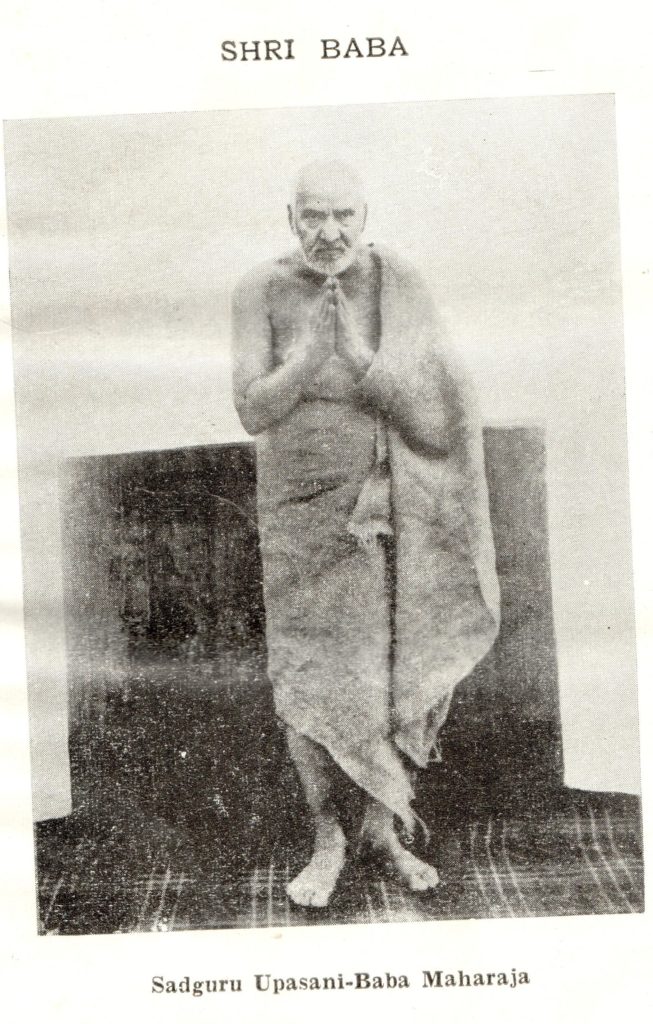

I was talking about a Guru. Let us revert to our subject. Guru or Sadguru has to have the required qualities in him. There is a great difference between Guru and Sadguru. Guru has to have the qualities as described in the Shastras; otherwise he cannot be called a Guru. I am particularly telling you this because one develops pride about his Guru. As we are always proud of our child — whatever it be, in the same way, we develop pride about our Guru. One rather does not feel the same respect towards other person’s Guru, provided of course one is true to one’s own. Otherwise in course of time one begins to have liking towards another person’s Guru. Many a time this is experienced. Those others talk highly of their Guru.
This man begins to enquire. He asks them, “Can your Guru tell what is going on in my mind”, and so on. Others eulogise theirs, and this fellow leaves his own Guru and goes to that of others. One should never leave his own; one should persistently stick to one’s own. If the Guru behaves in a particular way to get himself recognised as one, then he is no Guru. It is immaterial how he behaves. He may behave in an ultra modem way; what does it matter? Generally, however, Guru is a person who himself desires to be recognised as a Guru and hence behaves in a way that will make others accept him as a Guru. Now, why this? The person, who is in course of developing into a Guru, desires to adopt the necessary qualities, and the persons who call him a Guru imagine or rather charge him with those qualities, since virtuous qualities characterise a Guru. In the world Guru is that who is virtuous and inspires virtues in others. (Virtue means Sat-guna — qualities of Sat). It is really speaking the duty of a human being to develop to imbibe the qualities of Sat.
A disciple must always desire and strive to imbibe the various virtues depicted by his Guru, and it behoves the Guru to increase and to maintain those virtues. If that be the spirit between them, then they can be called as Guru and Shish-ya. Even if such a Guru is not a Sadguru, with this spirit he can develop into one, and the disciple can derive the benefit out of him.
Let us consider for the present only two types of Gurus. So far I have spoken about the Guru. Whosoever wants to attain the state of Sadguru, tries first to attain the state of a Guru. The state of Sat, as it is, is devoid of any quality whatever. Various attributes have been dubbed on Sat, and the Guru tries to imbibe them. Why are those attributes dubbed on Sat? The reason is this: If the disciple desires to imbibe those attributes to attain the state of Sat, then those attributes automatically influence — filter into his Guru, and the Guru reaches the state of Sat.
I will give you an example. Suppose in a school an intelligent teacher meets with an intelligent student. The teacher takes great interest in the boy and teaches him with all sincerity. The student, on the other hand, exerts to understand what is being taught, and questions the teacher in an intelligent manner. If he is able, the teacher at once solves his difficulty; if not, he tells him that he will think over and explain to him his difficulty the next day.
This mutual attitude adds on to the knowledge of both the teacher and the taught. Of course this is only possible when there is a hard working, honest and intelligent student. In the same way, the Guru and Shishya are benefited mutually. The point to be well-borne in mind is that the Guru has not got the qualities of a Guru; it is the disciple that makes him a Guru. If there are no students how can a person be a teacher even if one is appointed as such? A student is the first proviso essential. Then the student has to put faith in somebody superior to him in some way; he may be superior only in age; but that does not matter. The student who is very anxious to learn knows all about what he desires to learn, but he is not conscious of it. If the student approaches one who is ‘Nothing’, i.e., who has attained the state of ‘Nothing’, i.e., the state of ‘only’, then that inner knowledge of his, of course unknown to him, passes into him — the ‘Nothing’. If the Guru has something, i.e., he has not attained the state of ‘Nothing’, then that invisible or rather the unknown knowledge within the heart of the disciple is not able to find its way into the Guru; if he has become ‘Nothing’, then all that knowledge is automatically transferred.
The Guru says that he knows not and cannot explain what he wants. The disciple, on this, says, “Sir, you are supreme; you are all in all; you know all; please tell me.” Thus the ‘yes and no’ goes on between them for some time; subsequently, the transfer of the knowledge takes place and the Guru is able to speak on that subject; in other words, he tells whatever he receives from the disciple.
In the gross way the Guru remains a Guru; but from the inner point of view, as the knowledge is received by him, he himself becomes a disciple of his gross disciple who becomes his inner Guru. Such mutual development to its full measure has been aptly described as “Gurushishyayorabhedah”, meaning, — there is no difference between the Guru and the Shishya. Whence the Guru or the Shishya then? All this means that it is the student that develops the teacher. Whichever subject a student wants to learn, he has to make somebody as a suitable teacher. The teacher then works hard and tries to satisfy his student. In the same way, is the status of a Guru. Guru thus is one who tries to imbibe the qualities that are dubbed on the state of Sat. But the one who is the same from within and without, who is devoid of any thought or behaviour (i.e., Vichara and Achara) who has attained the state of ‘Nothing’ — ‘the Only’, is the Sat-guru.
In short, trying to attain the various attributes dubbed on Sat and their use to the disciple, is what is meant by Guru. A person thus who goes on attaining the various virtuous attributes — attributes dubbed on Sat and utilises them for the betterment of others and of himself, is a Guru.
The state of §atguru is beyond this state of a Guru. The various attributes, good or bad, that are dubbed on the state of Sat, are not able to abide there. The state of Satpurusha and that of a Sadguru is the same. There is no difference between them. The attributes and behaviour shown by the Sadguru, i.e., Satpurusha, depend upon the approacher. If an approacher expects virtues, he is able to see virtues; if the approacher is all vanity, he sees all vanity there; but both such attributes shown by him — charged on. him by the approacher — do not belong to him — do not affect him — do not touch him. Virtuous or vicious thoughts and behaviour of a Satguru depends on the approacher himself, he only reflects what the approacher has.